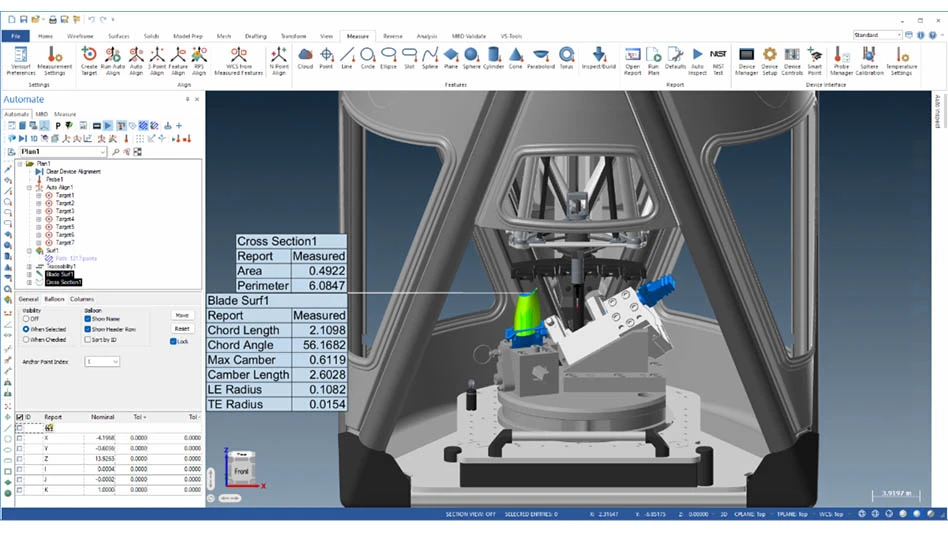 The design of a human-machine interface (HMI) can be as vital to a product’s success as the design of the product itself. Effectively designed HMIs have made vital contributions to the successes of countless products across the spectrum of industries ranging from the most sought-after consumer products to advanced military and aerospace equipment.
The design of a human-machine interface (HMI) can be as vital to a product’s success as the design of the product itself. Effectively designed HMIs have made vital contributions to the successes of countless products across the spectrum of industries ranging from the most sought-after consumer products to advanced military and aerospace equipment.
Aerospace applications range from cockpit controls and displays, to cabin-environment controls, to in-flight entertainment systems. HMIs are used throughout the defense industries, whether shipboard, airborne, or ground-based mobile applications, such as hand-held computers, high-resolution monitors, and secure voice/data communications devices. Because of their exposure to harsh environments and rough treatment, these products often require ruggedized HMIs.
“You’ve got to have the right interface for the right application,” says Hemant Mistry, president of Jayco mmi (man-machine interface), Corona, Calif. “HMIs for defense and aerospace applications must be designed to improve cognition and comprehension to enable rapid decision making. So it is essential that information is clearly presented and that inputs to a system are easy and intuitive to eliminate errors in stressful situations.”
Jayco, a company founded in 1980, designs, engineers, and manufactures a wide variety of interface products, specializing in extreme applications for defense, aerospace, and other sectors. The company designs and builds parts from mechanical switches to touch panels to meet or exceed MIL-STDS and other rigorous specifications for environmental conditions, shielding, and lighting conditions.
HMIs can be viewed as an integral part of the product itself, but the design and manufacture of the interface is often a separate, specialized process that involves high levels of complexity – both human and technological. Build-to-print HMI designs, created without the collaboration of an interface specialist, are almost always fraught with problems.
Developing a successful machine interface involves design subtleties such as ergonomics, psychology, and other user-centric considerations. The need to perform in harsh environments determines the choice of materials and interface technologies. Increasingly, there’s also a need to fit the most effective HMI within extremely limited space on smaller products.
Whether the interface is displaying information, collecting data, or controlling operations, it may require special design considerations such as ruggedized features or the integration of multiple elements into one. These are indicative of the many design challenges at the higher levels of complexity shared by HMIs.
Avoiding design pitfalls
The past shows us that the improper design of an HMI can render a product astonishingly ineffective. The VCR stands out in the consumer electronics arena as a product that was designed to revolutionize television viewing habits, yet the product interface was daunting enough to discourage users from even setting the time. Other newly developed consumer, scientific, and industrial products have also been compromised by user-unfriendly interfaces. Touchscreen typing on smart phones, for example, is considerably more difficult to perform than keyboard typing, particularly in turbulent or bumpy conditions.
Today, particularly when developing professional equipment for critical applications, designing the most appropriate HMI has become even more challenging.
 With such a dizzying array of solutions available, it is extremely difficult for most product designers to determine appropriate switch and display technologies, which control modalities should be used, the functions that require direct user access, which materials and construction techniques are optimum, and what engineering constraints influence both design and costs.
With such a dizzying array of solutions available, it is extremely difficult for most product designers to determine appropriate switch and display technologies, which control modalities should be used, the functions that require direct user access, which materials and construction techniques are optimum, and what engineering constraints influence both design and costs.
Seasoned engineers well versed with HMI solutions often provide complete documentation for their designs. While these are often excellent, they may be losing opportunities for cost reduction or other benefits if they do not consult with HMI manufacturers before completing designs.
“There are serious challenges involved when customers build-to-print their own interface designs,” says Keith Heinzig, vice president of engineering at Secure Communication Systems Inc., Santa Ana, Calif. “Those include possible errors requiring redesign and additional time and money. Also, depending on the application, reliability is always a key constraint.”
Heinzig adds that Secure Communications Systems engineers are not open to compromises that may impact reliability. The company provides custom, rugged computers and custom contract-manufacturing solutions for defense, aerospace, and industrial applications that involve cold weather and other extreme conditions. Secure Communications Systems specializes in the integration of commercial off-the-shelf equipment (COTS) into reliable, rugged and cost-effective solutions.
From an interface developer/manufacturer’s perspective, the built-to-print approach carries with it certain avoidable risks.
“In most cases, a build-to-print HMI requires redesign, rethinking that can be unnecessarily expensive and delay product releases,” Mistry says.
Mistry views the HMI as a system, not just a component, starting with what the user sees and touches all the way through to communication with the host computer.
Early involvement during the design phase, through integration of the various components of an HMI, ensures that all the parts of a complete subassembly – including enclosures, displays, switches, and electronics – work in harmony to meet the required performance levels. The end result is a higher performing HMI that is easier for end users to manage and integrate into their systems.
Mistry says that the most efficient and effective approach to HMI design usually involves a team approach that includes the product engineering staff as well as the interface supplier. The latter would provide consulting and design expertise based on the experience and diversity of interface hardware and software engineers, human factor experts, product designers, and manufacturing expertise. This consultative process can reduce product development time and costs while solving complex problems with superior solutions and packaging.
“By working together, the team can ensure that all of the relevant ideas are thoroughly explored, and that various manufacturing issues are taken into account,” Mistry explains.
“The best HMIs are actually simple and intuitive,” he adds. “But to make them simple and intuitive is not easy. What is required is a thorough understanding of the application, an understanding of the environment that the product is going to be used in, and the technologies that are available to achieve the end.”
Ensuring that interface devices are ruggedized for environmental conditions is a major concern in military and aerospace applications. This includes protection against corrosive environments, providing for ultra-rugged applications that require military-grade shielding, protection against shock or vibration, contaminant sealing, sunlight readability, night-vision lighting, and extended-life.
“We have worked successfully with Jayco for a number of years, and their preliminary design consultation has been very helpful in keeping us on the right track as far as planning and implementing the HMIs for our products,” Heinzig explains. “Some of our more recent projects include very small controls, such as wrist displays for the military.”
To complement the consultative approach, Mistry’s firm goes a step further by providing a virtual prototype so that the customer can see precisely the proposed solution as well as how it will fit and operate in the end-user’s environment.
“The trend today is that products have to be smaller, lighter, and use less power,” says Heinzig. “Yet, you somehow have to find room to squeeze some HMI controls onto the equipment, and that gets more difficult as product sizes continue to be reduced.”
Heinzig adds that finding room for the HMI controls on the product often requires creativity and a bit of finesse: “It is often necessary to place the controls on the periphery of the product, and that requires advanced planning.” Virtual prototyping aids in the process and shows exactly what is possible.
Jayco mmi Inc.
www.jaycopanels.com
Secure Communications Systems Inc.
www.securecomm.com

Explore the August September 2014 Issue
Check out more from this issue and find your next story to read.
Latest from Aerospace Manufacturing and Design
- Demystifying Controlled Unclassified Information (CUI)
- Simplify your shop floor operations while ensuring quality parts
- Happy Independence Day - July 4th
- Bombardier receives firm order for 50 Challenger, Global jets
- Automatic miter bandsaw
- SAS orders 45 Embraer E2 jets with options for 10 more
- Height measuring instrument
- Shopfloor Connectivity Roundtable with Renishaw & SMW Autoblok





